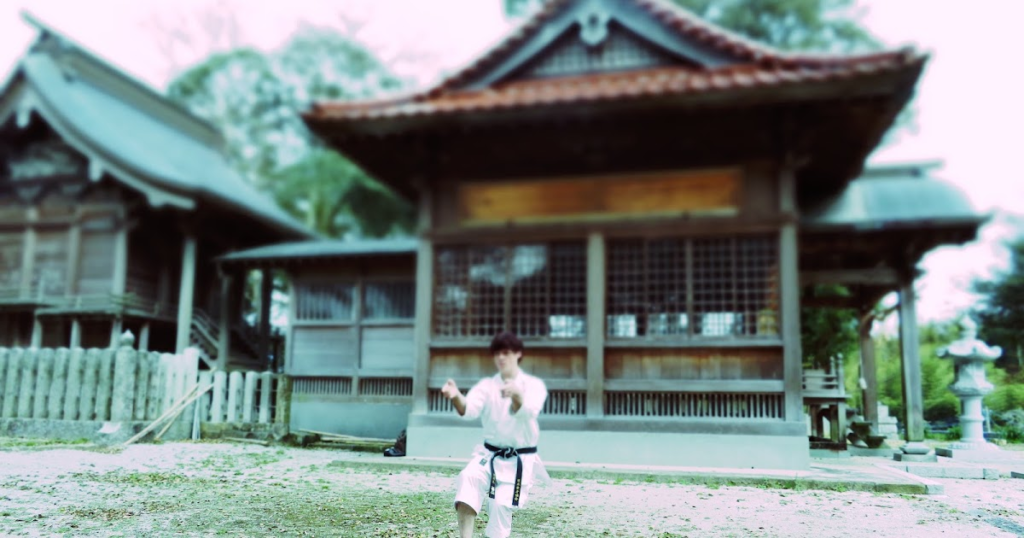Introduction
Do I Step Back in Jiyuu Ippon Kumitee, a form of free sparring in traditional Japanese karate, is a critical component of martial arts training. It emphasizes precision, control, and the application of techniques in a controlled but dynamic setting. One crucial aspect of Jiyuu Ippon Kumite is the decision to step back. This movement is more than just a defensive tactic; it involves strategic thinking, understanding of distance, and effective use of time to counter an opponent’s attack. This article will delve into why stepping back is essential in Jiyuu Ippon Kumite, the principles behind it, and how it impacts the overall performance in this sparring practice.
Understanding Jiyuu Ippon Kumite

Jiyuu Ippon Kumite, which translates to “free one-point sparring,” is a practice in many karate styles where two practitioners engage in a semi-free sparring format. The main objective is to land a single, decisive point by executing a technique with precision and control. Unlike more free-form sparring, Jiyuu Ippon Kumite focuses on controlled exchanges with clear goals and a set framework, allowing practitioners to practice specific techniques and strategies.
The Role of Stepping Back
In Jiyuu Ippon Kumite, stepping back serves several important purposes:
- Creating Distance: One of the primary reasons to step back is to create distance between you and your opponent. By stepping back, you can avoid an incoming attack, which might be aimed at a vulnerable part of your body. This distance allows you to regain composure, reassess the situation, and prepare for a counterattack.
- Defensive Strategy: Stepping back is a key defensive strategy. It’s not merely about avoiding an attack but also about positioning yourself more favorably for a counterstrike. By stepping back, you can often draw your opponent in or force them to overextend, creating openings for you to exploit.
- Regaining Control: If you find yourself in a situation where your opponent has gained the upper hand or is aggressively attacking, stepping back helps you regain control of the fight. It allows you to reset the engagement and think strategically about your next move.
- Maintaining Balance: Proper stepping back ensures that you maintain your balance and posture. In the heat of the sparring, maintaining your balance is crucial for effective defensive and offensive actions. A well-timed step back helps you stay grounded and ready for subsequent actions.
Principles Behind Stepping Back
To effectively step back in Jiyuu Ippon Kumite, several principles should be considered:
- Timing and Rhythm: Stepping back must be timed correctly. If done too early, you might miss an opportunity to counterattack; if done too late, you might be caught by the opponent’s strike. The rhythm of the movement should be in sync with the opponent’s actions, ensuring that you are not just reacting but anticipating their moves.
- Distance Management: Understanding and managing distance is critical. Stepping back too far can make you lose your offensive position, while stepping back too little may not provide enough space to effectively defend against an attack. Effective distance management allows you to create the optimal amount of space for both defense and counterattacks.
- Use of Angles: When stepping back, consider the angle of your movement. Simply moving straight back might not always be the best option. Sometimes, angling your retreat can help you avoid attacks more effectively and position yourself better for counterattacks.
- Mental Focus: Stepping back is not just a physical action but also a mental one. It requires you to stay focused, assess the situation quickly, and make strategic decisions. The ability to step back effectively is closely tied to mental discipline and awareness.
Training for Effective Stepping Back

Training to improve your ability to step back effectively in Jiyuu Ippon Kumite involves several key practices:
- Drills and Sparring: Regular drills and sparring sessions can help you practice the timing and execution of stepping back. Working with a partner allows you to experience different attacking styles and refine your defensive techniques.
- Footwork Exercises: Developing agility and footwork is crucial. Exercises that improve your speed and precision in moving backward will enhance your ability to step back effectively. Ladder drills, cone drills, and other footwork exercises can be beneficial.
- Scenario Training: Practice stepping back in various scenarios. For instance, simulate different types of attacks and practice stepping back while maintaining your balance and readiness to counterattack. This helps you adapt to real sparring situations.
- Video Analysis: Reviewing footage of your sparring sessions can provide insights into your stepping back technique. Analyzing both your movements and those of your opponents can help you identify areas for improvement and refine your strategy.
Common Mistakes and How to Avoid Them

While stepping back is a valuable technique, common mistakes can diminish its effectiveness:
- Over-Retreating: Stepping back too far can leave you out of range for effective counterattacks. Ensure that you maintain enough distance to remain in the fight and ready for the next move.
- Predictable Movement: If your stepping back becomes predictable, opponents might exploit it. Vary your movement and combine stepping back with other defensive actions to keep your opponent guessing.
- Lack of Follow-Up: Stepping back should be followed by a strategic response. If you step back but fail to capitalize on the opportunity to counterattack, you may lose the advantage. Plan your follow-up actions to make the most of the distance you’ve created.
Conclusion
Do I Step Back In Jiyuu Ippon Kumite is a fundamental skill that contributes significantly to defensive and offensive strategies. By creating distance, maintaining balance, and strategically positioning yourself, you can enhance your performance in this sparring practice. Mastery of stepping back involves understanding its principles, practicing regularly, and avoiding common mistakes. Through dedicated training and thoughtful application, stepping back can become a powerful tool in your Jiyuu Ippon Kumite arsenal, helping you to achieve greater control and effectiveness in your martial arts practice.
FAQs: Do I Step Back In Jiyuu Ippon Kumite
1. What is Jiyuu Ippon Kumite?
Jiyuu Ippon Kumite, or “free one-point sparring,” is a structured sparring practice in karate where two practitioners aim to score a single decisive point with precision and control. It involves controlled exchanges and specific techniques within a semi-free format.
2. Why is stepping back important in Jiyuu Ippon Kumite?
Stepping back is crucial for creating distance between you and your opponent, allowing you to avoid incoming attacks and reposition yourself. It helps you regain control, maintain balance, and set up opportunities for counterattacks.
3. How does stepping back improve defensive strategies?
Stepping back is a key defensive tactic that not only helps you avoid attacks but also positions you for counterattacks. It can draw your opponent in, force them to overextend, and create openings for you to exploit.
4. What principles should I follow when stepping back?
Key principles include:
- Timing and Rhythm: Ensure your step back is well-timed to align with your opponent’s movements.
- Distance Management: Balance the amount of distance to avoid being too far or too close.
- Use of Angles: Consider angling your step back to improve effectiveness.
- Mental Focus: Stay alert and make strategic decisions based on the situation.
5. How can I train to improve my stepping back technique?
Effective training involves:
- Drills and Sparring: Practice regularly with a partner to refine timing and execution.
- Footwork Exercises: Enhance agility with ladder drills, cone drills, and other footwork practices.
- Scenario Training: Simulate various attacks to practice stepping back in different situations.
- Video Analysis: Review sparring footage to identify and correct mistakes.
6. What are common mistakes when stepping back and how can I avoid them?
Common mistakes include:
- Over-Retreating: Don’t step back too far; maintain enough distance to stay in the fight.
- Predictable Movement: Vary your stepping back technique to avoid being easily read by your opponent.
- Lack of Follow-Up: Ensure you capitalize on the distance created by stepping back with a strategic counterattack.
7. How does stepping back impact my overall performance in Jiyuu Ippon Kumite?
Stepping back enhances your performance by improving your defensive capabilities, helping you maintain balance, and setting up opportunities for effective counterattacks. Mastery of this technique contributes to better control and effectiveness in sparring.
8. Is stepping back a defensive move only, or can it be used offensively as well?
While stepping back is primarily a defensive move, it can also be used strategically to position yourself for offensive opportunities. By creating distance and drawing your opponent in, you can set up for effective counters or set traps.
Stay in the loop for upcoming updates and alerts! Greek Buzz



















